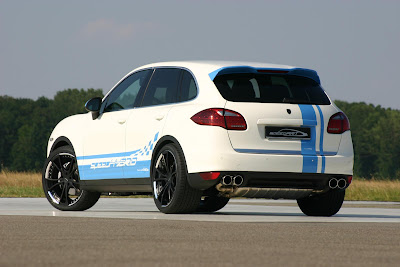
911 addicts hate the Panamera only slightly less than the company's Cayenne SUV (in fact, they can barely stand the Boxster) and would like nothing more than to see the Panamera fall flat on its face.
A casual inspection of the new base model Panamera's specification sheet might lead one to believe it a veritable morsel of aforementioned poop.
Though the lopping off of two cylinders saves some 30 kilograms, the new Panamera is still pushing perilously close to two tons, a formidable heft for any engine to motivate, let alone a relatively minuscule 3.6-litre V6.
Worse yet, at least according to that spec sheet, is that Porsche developed the V6 by simply lopping off two of the 4.8L V8's cylinders, never the way to optimize a six-cylinder powertrain. V6s are best harmonically balanced and, therefore, smoother running when aligned 60 degrees between the cylinder banks. Ninety degrees, like the Mercedes 3.5L V6, seldom works as well, feeling coarse and unsophisticated by comparison. The combination of that heft with a rough, high-revving engine could easily have been a huge mistake.
Thankfully for Porsche, the Panamera V6 never feels even remotely unsophisticated. Indeed, the new 3.6L is something of a marvel, feeling both powerful and surprisingly smooth - at least from inside the cabin. Most surprising, perhaps, is that Porsche bothered to develop its own V6 at all.
After all, the Cayenne makes do with a Volkswagen-sourced V6 that shares the very same performance statistics - 300 horsepower and 295 pound-feet of torque - as the Panamera. That's about all they share, although both offer unconventional formats.
The Panamera version is the unusual 90 degrees mentioned earlier, but the Cayenne's is equally unusual, its 3.6L V6 being a narrow-angle setup (10.6 degrees) made famous in various Volkswagen sports models. On the other hand, the Cayenne's VR6's is massively undersquare with a 89-millimetre bore and a long 96.4-mm stroke, while the Porsche 3.6 is a high-revving oversquare design with Porsche's Variocam variable valve timing.
Quite why Porsche forges ahead with two V6s of identical performance - when other companies are trying to minimize costly parts proliferation - is quite a mystery. Porsche's press kit makes a big deal about the automaker ``choosing'' the 90-degree format because it offers a lower centre of gravity, but that's a load of the aforementioned puppy droppings. The real reason for the format is that it was much cheaper to lop off two cylinders from the V8 rather than develop an all-new engine block.




.jpg)